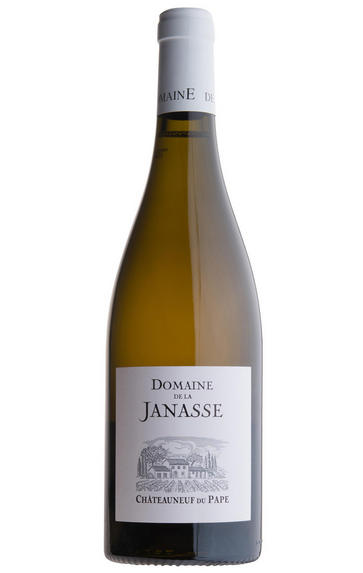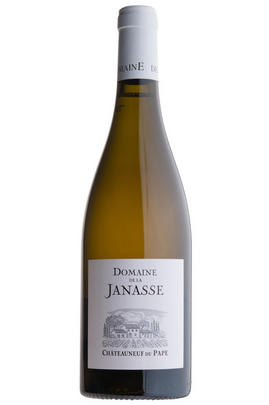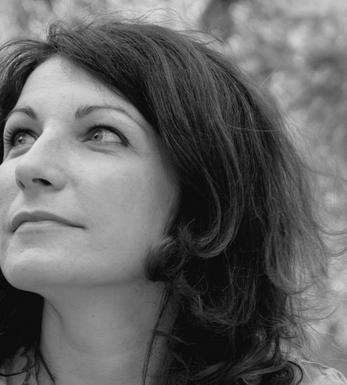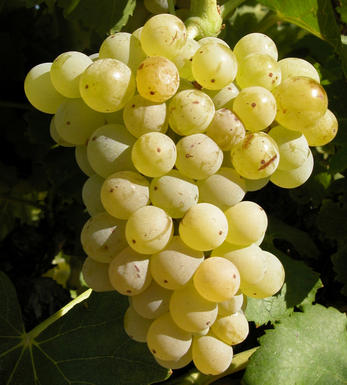
2014 Châteauneuf-du-Pape Blanc, Prestige, Domaine de la Janasse, Rhône

Critics reviews
Jeb Dunnuck - 30/10/2015
About this WINE

Domaine de la Janasse
Brother-and-sister team Christophe and Isabelle Sabon continue to work wonders at Janasse – a domaine founded by their father, Aimé Sabon, in 1973. They now farm around 90 hectares, 18 of which are in Châteauneuf-du-Pape. These are dotted across numerous plots in the northeast of the appellation, in the commune of Courthézon, where the soils are more sandy and therefore much cooler. They also have a few parcels on the famous, clay soil plateau of La Crau. The grapes are largely de-stemmed; concrete tanks are used for the Grenache and old oak for the Syrah and Mourvèdre. In other words, everything is fairly traditional. While they have been farming largely in accordance with organic principles for years, they are now undergoing full conversion to organic and expect to gain certification in 2024.
The domaine sadly suffered terribly from frost in 2021, reducing their output by 45% (and up to 80% for their Vin de Pays wines) – it is the siblings’ smallest vintage yet. They are however pleased with the quality, and they highlight its concentration and freshness.

Châteauneuf-du-Pape
The most celebrated village of the Southern Rhône, Châteauneuf-du-Pape is the birthplace of the now indispensable French Appellation d’Origine Contrôlée system – imperfect though it may be. Compared to the Northern Rhône, the vineyards here are relatively flat and often feature the iconic galet pebbles – the precise benefits of which are a source of much debate. Minimum alcohol levels required by the AOC are the highest in France, but at 12.5% it is well below the natural generosity of Grenache, which only achieves its full aromatic potential when it is fully ripe and laden with the resultant high sugars. Syrah and Mourvèdre contribute the other defining elements in the blend, adding pepper, savoury spice and structure to the decadent Grenache. There are a further 10 permitted red grape varieties which can be used to adjust the “seasoning”. Of the five white varieties permitted, it is Grenache Noir’s sibling – predictably perhaps – Grenache Blanc, which dominates, though Roussanne shows a great deal of promise when handled well, notably at Château de Beaucastel.

White Rhône Blend
With the exception of the wines from Condrieu and Château-Grillet virtually all Rhône Valley whites are made from blends.
In the north, the white wines of Hermitage, Crozes-Hermitage, St-Joseph, and St-Péray are produced from blends of Marsanne and Roussanne. Generally Marsanne is the dominant partner and it lends colour, body and weight to the blend, as well as richly scented fruit. Roussanne, a notoriously low yielder and pernickety to grow, produces intensely aromatic wines which contribute bouquet, delicacy and finesse to the blend.
Until about 15 years ago there was very little interest in southern Rhône whites as it was widely believed that the combination of dull non aromatic grapes and the baking summer heat meant quality wine production was nigh impossible. Since then the quality has improved markedly through the introduction of cool fermentation techniques and increased plantings of northern Rhône white grapes.
The base of many blends is still Grenache Blanc, a widely planted variety producing fresh wines with apple-like fruits, often with hints of aniseed. Ugni Blanc is still found in many blends, as is Clairette though their general lack of character and definition has led to a reduction in plantings. The future for southern Rhône whites appears to lie with Roussanne, Marsanne, and, increasingly, Viognier.


Buying options
Add to wishlist
Description
One of the greats of Châteauneuf and recalling Beaucastel’s Vieille Vignes cuvée, quite understandably given its provenance and the fact that the blend is dominated by 70 percent of old vine Roussanne, this is an outstanding success. Barrel ageing allied to 14 months of battonage have conspired to craft a gloriously rich and forthcoming wine, its near tropical richness held in check by a linear seam of mineral-driven acidity.
Drink 2017-2022.
Simon Field MW – Wine Buyer
wine at a glance
Delivery and quality guarantee